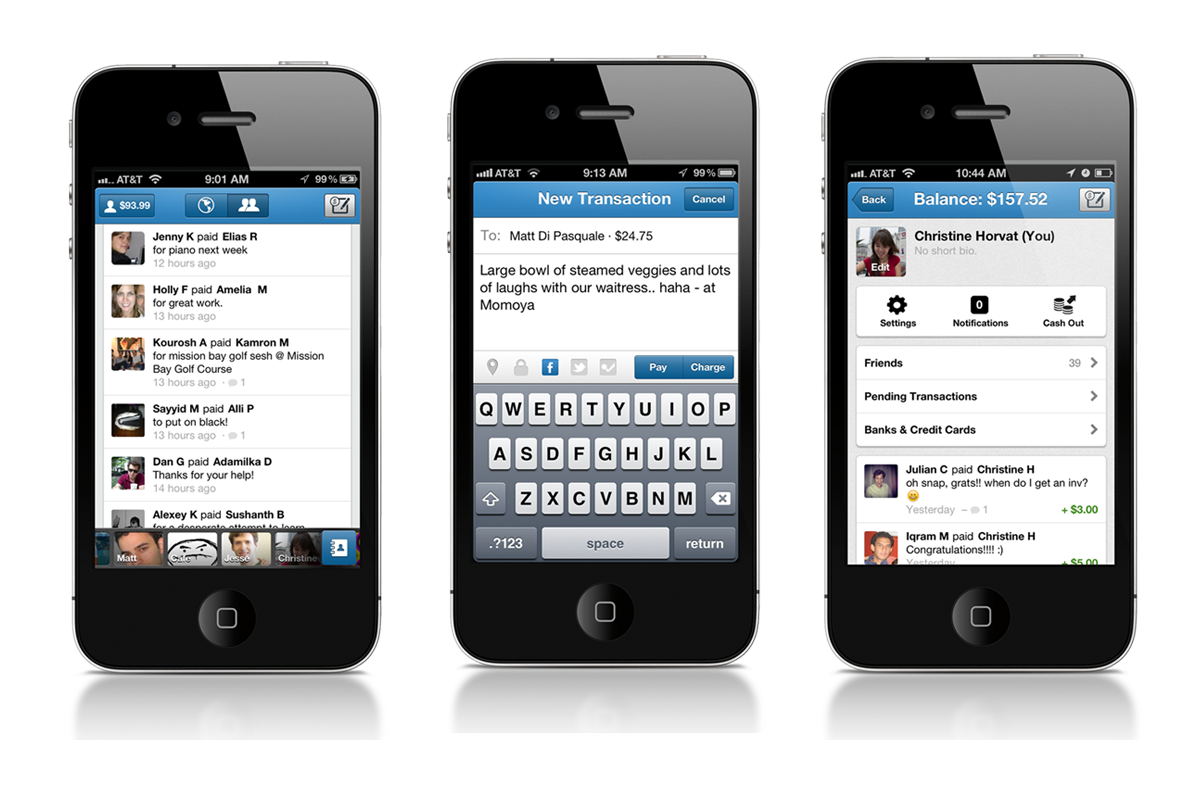I worked at Venmo as the only full-time product designer when they were still a small, engineer-dominant start-up. I floated between different teams, working on the marketing website, the web app, the iPhone and Android apps, social media projects, and various internal tools. The great thing about working at a start-up is that everyone does everything. There's no such thing as ‘that’s not my job’. I learned a lot about code, analytics, and the intricacies of striking a balance between trust and fun in a financial product that put social at it's core.
Venmo is a mobile payment app that lets you make and share payments with anyone. I co-wrote and produced the video above, which tries to capture what we wanted Venmo to be - not just useful, but fun and social as well.
After unveiling a major redesign of the iPhone and Android apps, Venmo wanted to set a release cycle of every 3 weeks for optimizations and new features. I needed to set up user testing to coincide with this cycle. I wanted to test primarily out in the field, since that would most likely reveal problems not identified in a lab setting, such as connection speed on devices using data.

First, I needed to solve the logistical problem of how to record a mobile phone in the field, since this was before some of the awesome mobile-screen recording technology we have now. I researched various recording devices, and due to limitations on budget, I decided to create a DIY recording device which ended up working out well. If you ever want to make one for yourself, here is my recipe!

Some of the problems that testing uncovered appeared insignificant at first, but eventually uncovered a deeper flaw. For example, during one round I noticed users were having a hard time finding the privacy settings. This seemed like a small detail, but for a payments platform trust is key, and if users didn't feel in control of who was seeing their payments, they were not likely to keep using the app.
I shared key insights with the team after each round of testing, and made recommendations on how to improve the user experience for the next release.